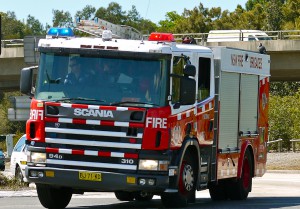It might be small change in terms of communications and technology spend, but the New South Wales government has literally hit the airwaves to signal a $2.8 million upgrade to its Government Radio Network (GRN) as big leap forward for reliability and uptime.
The state’s Minister for Finance and Services Dominic Perrottet and Minister for Police and Emergency Services Stuart Ayres announced on Thursday that the NSW Telco Authority has struck a deal with Optus and Digital Distribution Australia (DDA) as part of a wider push to allow multiple carriers to connect the GRN’s sites together.
The opening up of the GRN to multiple carriers comes as emergency and frontline services contend with an explosion of data hungry devices and applications that can potentially suck up limited dedicated spectrum in emergencies.
While the new digital assets provide a crucial edge in managing critical situations and emergencies by allowing the use of video, geospatial information and real time tracking, making sure they have signal available has become an increasing priority across Australia – especially when the public also hit their mobile devices during major events.
According to the ministers the latest upgrade will provide superior coverage speeds with less disruption by letting multiple carriers hook up the GRN, while a “sophisticated backup system” has also been put in place to “give the GRN the flexibility to switch between carriers when necessary.”
Being able to switch during emergencies like natural disasters is particularly important because responders can hop between services if cells or towers are burnt out, washed away or blown over.
Mr Ayres said the upgrade to the NSW Telco Authority’s GRN backhaul network would improve communications and performance of the network for the Ambulance Service of NSW, the Rural Fire Service, State Emergency Services and NSW Fire and Rescue.
“This move is all about making the operational radio network more resilient while creating a platform meet the growing and future needs of our emergency services,” he said.
Mr Perrottet said private sector partnerships that were commercially viable would deliver mission critical services that are both efficient and forward looking.
“At the same time technical advances will improve efficiency, delivering a world-class communication network for the people of NSW and lays the foundations for further cost savings and innovation in the future,” he said.
Comment below to have your say on this story.
If you have a news story or tip-off, get in touch at editorial@governmentnews.com.au.
Sign up to the Government News newsletter

